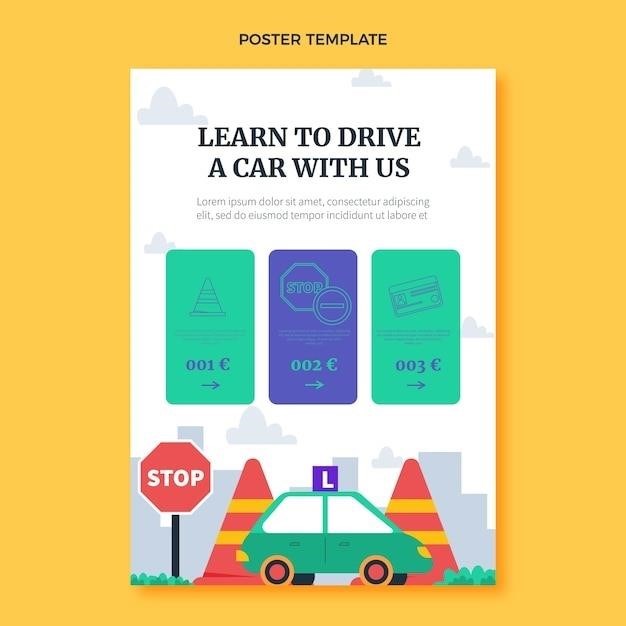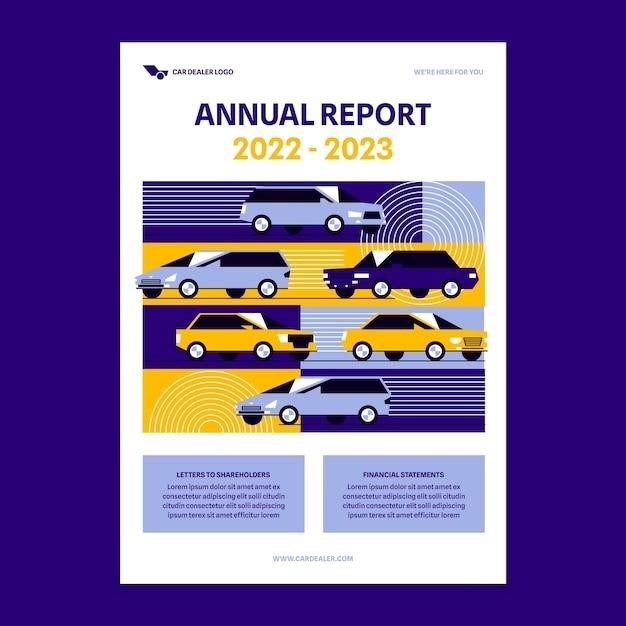2023 Florida Traffic Laws Quick Reference Guide
This comprehensive guide provides a concise overview of key Florida traffic laws that went into effect in 2023. It covers essential regulations, changes, and updates for all Florida drivers, including those new to the state. This guide is intended to be a quick reference tool and is not a substitute for legal advice. For specific legal guidance, it’s highly recommended to consult with a qualified legal professional.
Introduction
Navigating the complex world of traffic laws can be a daunting task, especially when faced with a multitude of rules and regulations. Florida, like many other states, undergoes regular updates and revisions to its traffic laws, making it crucial for drivers to stay informed. This comprehensive guide serves as a valuable resource for drivers in Florida, providing a clear and concise overview of the key traffic laws that were implemented in 2023.
From changes to the Move Over law to updates on driving restrictions for minors, this guide covers a range of topics that directly impact drivers’ daily routines. It aims to empower drivers by providing them with the knowledge they need to navigate Florida’s roadways safely and legally.
The information presented in this guide is designed to be both informative and accessible. It is presented in a clear and concise manner, making it easy for readers to understand the key points of each law. The guide is also organized in a logical manner, allowing readers to easily find the information they need. Whether you are a seasoned driver or a new resident of Florida, this guide is an essential resource for staying informed about the state’s traffic laws;
Key Changes in Florida Traffic Laws for 2023
The year 2023 brought a wave of new legislation impacting Florida’s traffic laws, aiming to enhance road safety and streamline regulations. While many of these changes may not drastically alter daily driving habits, understanding their implications is crucial for every driver.
Among the significant updates was the expansion of Florida’s Move Over law, requiring drivers to shift lanes away from stopped emergency vehicles, such as police cars, ambulances, and utility trucks. This change underscores the importance of prioritizing safety and providing a buffer zone for first responders.
The 2023 legislative session also saw the introduction of new regulations regarding traffic citations and enforcement. These changes aimed to clarify procedures and ensure a more consistent approach to ticketing and related processes.
The focus on road safety and responsible driving extended to updates regarding driving restrictions for minors. These changes aimed to further promote safety and responsible driving habits among young drivers by providing clear guidelines and restrictions based on age and experience.
Florida’s Move Over Law Expansion
Florida’s Move Over Law, designed to protect emergency personnel and enhance road safety, underwent a significant expansion in 2023. This expansion extends the law’s scope, requiring drivers to take extra precautions when encountering various types of stopped vehicles.
Previously, the Move Over Law mandated drivers to move over a lane or slow down when approaching emergency vehicles with flashing lights, such as police cars, fire trucks, and ambulances. The 2023 update broadened this requirement to encompass all stopped vehicles with flashing lights, including utility trucks, tow trucks, and roadside assistance vehicles. This expansion ensures a wider range of vehicles and personnel are protected while performing essential tasks on the roadway.
The updated law emphasizes the importance of giving stopped vehicles a safe buffer zone, reducing the risk of accidents and allowing workers to perform their duties without fear of being struck. Drivers are urged to be vigilant, observe these new regulations, and prioritize the safety of those working on the roads.
Traffic Citations and Enforcement
Understanding the process of traffic citations and enforcement is crucial for all Florida drivers. When a traffic violation occurs, law enforcement officers issue citations, which are formal notices detailing the alleged offense. These citations serve as legal documentation of the violation and outline the necessary steps for addressing the issue.
The Department of Highway Safety and Motor Vehicles provides standardized traffic citation forms to ensure uniformity across the state. These forms include a notice to appear, outlining the date, time, and location for the driver to appear in court. The citation also specifies the alleged violation and any associated fines or penalties.
Drivers have several options for addressing a traffic citation. They can choose to plead guilty, pay the associated fines, and accept any points added to their driving record. Alternatively, they can plead not guilty and contest the violation in traffic court. This option allows drivers to present their case and potentially have the citation dismissed or reduced.
Florida’s Uniform Traffic Control Law
Florida’s Uniform Traffic Control Law, codified in Chapter 316 of the Florida Statutes, establishes a comprehensive framework for traffic regulations throughout the state. This law aims to ensure consistency and uniformity in traffic laws, regardless of location. It encompasses a wide range of regulations, including rules for driving, parking, pedestrians, and traffic signals.
One of the key objectives of the Uniform Traffic Control Law is to promote safety on Florida’s roads. It outlines specific rules for vehicle operation, such as speed limits, right-of-way procedures, and requirements for passing. The law also addresses pedestrian safety, including crosswalk regulations and the use of sidewalks.
The Uniform Traffic Control Law also covers traffic signals and signs. It establishes standards for the design, placement, and meaning of traffic signals, ensuring that drivers understand their significance. It also outlines the requirements for signs, including warning signs, regulatory signs, and informational signs, ensuring clear communication on roadways.
Driving Restrictions for Minors
Florida imposes specific driving restrictions on minors, aiming to enhance safety and reduce the risk of accidents. These restrictions vary based on age and driving experience. Here’s a breakdown of the key restrictions for drivers under 18⁚
Learners License (15 Years Old)⁚ A learner’s license allows supervised driving with a licensed driver aged 21 or older. The driver with the learner’s license must have a parent or legal guardian present. Driving is only permitted between 6 a;m. and 11 p.m. for the first three months after issuance. After that, driving is allowed until 10 p.m. The vehicle must be equipped with a red “Learner” decal.
Driver License 16 Years Old⁚ A driver’s license can be obtained at age 16 after holding a learner’s license for at least 12 months. There are restrictions on nighttime driving, with driving only allowed between 5 a.m. and 1 a.m.
Driver License 17 Years Old⁚ Drivers 17 years old have less restrictive hours, allowing driving between 5 a.m. and 1 a.m.
These restrictions are in place to ensure that young drivers gain experience and demonstrate responsible driving habits before being granted full driving privileges.
Traffic Regulations for Mobility-Impaired Persons
Florida recognizes the need for specific regulations to ensure the safety and accessibility of mobility-impaired individuals. The state’s traffic laws include provisions designed to assist and protect those with disabilities. Here are some key traffic regulations related to mobility-impaired persons⁚
Traffic Regulations to Assist Blind Persons⁚ Florida law prioritizes the safety of blind pedestrians. Drivers are required to stop for a blind pedestrian who is using a white cane or a guide dog and is attempting to cross the street. Failure to do so can result in fines and penalties.
Traffic Regulations to Assist Mobility-Impaired Persons⁚ The law outlines various regulations to protect individuals with mobility impairments. These regulations include provisions for parking spaces designated for individuals with disabilities, accessible curb ramps, and designated parking areas for mobility-impaired persons.
Fishing from State Road Bridges⁚ Florida’s traffic laws also address safety concerns related to fishing from state road bridges. Specific regulations dictate the safe and lawful practice of fishing from these bridges, considering the potential risks to both anglers and motorists.
Driving Through Safety Zones⁚ Driving through safety zones, such as those established near schools or bus stops, is strictly prohibited. These zones are designed to protect children and pedestrians, and violating these regulations can lead to fines and penalties.
These regulations aim to create a more inclusive and accessible environment for individuals with disabilities while ensuring the safety of all road users.

Traffic Court Rules and Procedures
Understanding Florida’s traffic court rules and procedures is crucial for anyone facing a traffic violation. This section outlines key aspects of traffic court processes in Florida⁚
Florida Traffic Court Rules (TCR)⁚ The TCR governs the practice and procedure in any traffic case, specifically applying to county courts and civil traffic infraction hearing officers. These rules ensure consistency and fairness in traffic court proceedings.
Continuing Legal Education for Hearing Officers⁚ Florida law mandates that traffic hearing officers undergo 4 hours of continuing legal education annually. This requirement emphasizes professional development and ensures that hearing officers stay abreast of legal updates and best practices. The continuing legal education program must be approved by the Supreme Court and include a minimum of 2 hours of ethics or professionalism and 2 hours of civil traffic infraction related education.
Jurisdiction over Traffic Violations⁚ Courts have jurisdiction over traffic violations, including the power to impose fines, penalties, and other sanctions. This jurisdiction extends to matters related to the custody and detention of minors involved in traffic violations.
Traffic Law and Substance Abuse Education⁚ Individuals who complete a Traffic Law and Substance Abuse Education course through a registered provider automatically have their completion information submitted to the Florida Department of Highway Safety and Motor Vehicles. This information is readily accessible at all Driver License Offices.
Familiarizing yourself with these rules and procedures can help you navigate traffic court effectively and understand your rights and responsibilities.
Resources for Florida Drivers
Navigating Florida’s traffic laws can be challenging, but various resources are available to help drivers stay informed and compliant. Here are some valuable resources to consider⁚
Florida Department of Highway Safety and Motor Vehicles (FLHSMV)⁚ The FLHSMV is the primary authority for motor vehicle regulations in Florida. Their website offers a wealth of information, including the Official Florida Driver License Handbook, which covers essential driving laws, regulations, and safety tips.
Florida Drivers Handbook⁚ This comprehensive guide, published by the FLHSMV, provides detailed information about Florida driving laws, traffic signs, road rules, and driving safety practices. It’s a valuable resource for all Florida drivers, especially those preparing for the Florida Driver License Class E Knowledge Exam.
Florida Department of Transportation (FDOT)⁚ The FDOT offers real-time traffic information on its website, including updates on crashes, travel times, congestion, lane closures, severe weather, and construction projects on Florida’s interstates and toll roads.
Traffic Law and Substance Abuse Education Providers⁚ These providers offer courses that can help drivers learn about Florida traffic laws and substance abuse awareness, potentially reducing insurance premiums and improving driving safety.
By utilizing these resources, Florida drivers can ensure they are well-informed, stay compliant with traffic laws, and drive safely on the roads.
Florida’s traffic laws are constantly evolving, and staying informed is crucial for all drivers. This quick reference guide has provided a snapshot of some of the key changes and updates that came into effect in 2023. While this guide offers valuable insights, it is essential to remember that it is not a substitute for legal advice.
For comprehensive and up-to-date information, drivers should consult the official resources provided by the Florida Department of Highway Safety and Motor Vehicles (FLHSMV) and the Florida Department of Transportation (FDOT). These resources offer detailed explanations of traffic laws, regulations, and driving safety practices.
By staying informed about Florida’s traffic laws, drivers can contribute to safer roads for themselves and others. Remember to drive responsibly, be aware of your surroundings, and always follow the rules of the road. Safe driving practices are paramount in ensuring a positive and accident-free driving experience in Florida.
